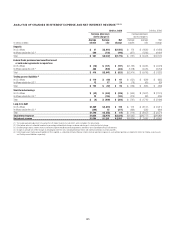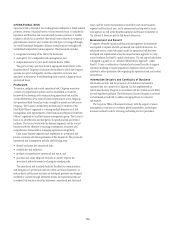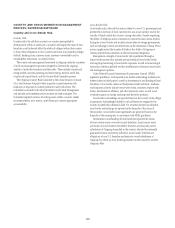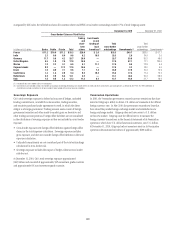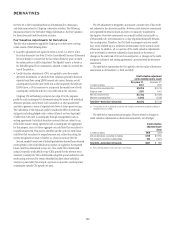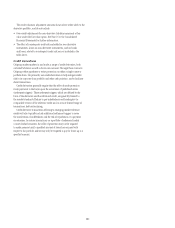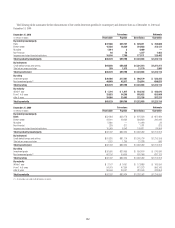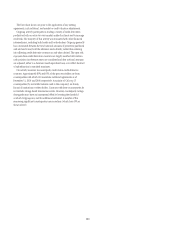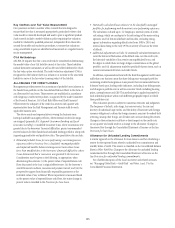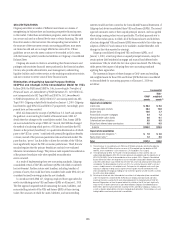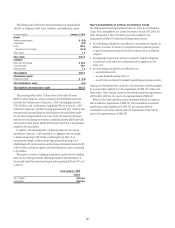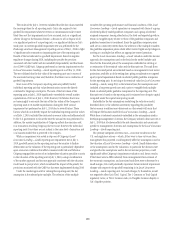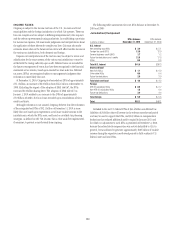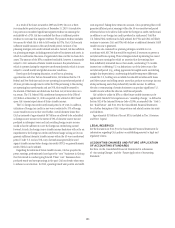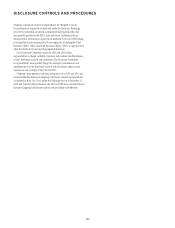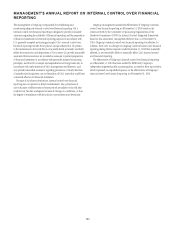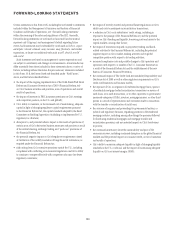Citibank 2010 Annual Report Download - page 137
Download and view the complete annual report
Please find page 137 of the 2010 Citibank annual report below. You can navigate through the pages in the report by either clicking on the pages listed below, or by using the keyword search tool below to find specific information within the annual report.135
Key Controls over Fair Value Measurement
Citi’s processes include a number of key controls that are designed to
ensure that fair value is measured appropriately, particularly where a fair
value model is internally developed and used to price a significant product.
Such controls include a model validation policy requiring that valuation
models be validated by qualified personnel, independent from those who
created the models and escalation procedures, to ensure that valuations
using unverifiable inputs are identified and monitored on a regular basis by
senior management.
CVA Methodology
ASC 820-10 requires that Citi’s own credit risk be considered in determining
the market value of any Citi liability carried at fair value. These liabilities
include derivative instruments as well as debt and other liabilities for which
the fair value option was elected. The credit valuation adjustment (CVA) is
recognized on the balance sheet as a reduction or increase in the associated
liability to arrive at the fair value (carrying value) of the liability.
ALLOWANCE FOR CREDIT LOSSES
Management provides reserves for an estimate of probable losses inherent in
the funded loan portfolio on the Consolidated Balance Sheet in the form of
an allowance for loan losses. These reserves are established in accordance
with Citigroup’s credit reserve policies, as approved by the Audit Committee
of the Board of Directors. Citi’s Chief Risk Officer and Chief Financial
Officer review the adequacy of the credit loss reserves each quarter with
representatives from the Risk Management and Finance staffs for each
applicable business area.
The above-mentioned representatives covering the business areas
having classifiably managed portfolios, where internal credit-risk ratings
are assigned (primarily ICG, Regional Consumer Banking and Local
Consumer Lending), or modified Consumer loans, where concessions were
granted due to the borrowers’ financial difficulties, present recommended
reserve balances for their funded and unfunded lending portfolios along with
supporting quantitative and qualitative data. The quantitative data include:
Estimated probable losses for non-performing, non-homogeneous •
exposures within a business line’s classifiably managed portfolio
and impaired smaller-balance homogeneous loans whose terms
have been modified due to the borrowers’ financial difficulties, where
it was determined that a concession was granted to the borrower.
Consideration may be given to the following, as appropriate, when
determining this estimate: (i) the present value of expected future cash
flows discounted at the loan’s original effective rate; (ii) the borrower’s
overall financial condition, resources and payment record; and (iii) the
prospects for support from financially responsible guarantors or the
realizable value of any collateral. When impairment is measured based
on the present value of expected future cash flows, the entire change in
present value is recorded in the Provision for loan losses.
Statistically calculated losses inherent in the classifiably managed •
portfolio for performing and de minimis non-performing exposures.
The calculation is based upon: (i) Citigroup’s internal system of credit-
risk ratings, which are analogous to the risk ratings of the major rating
agencies; and (ii) historical default and loss data, including rating-
agency information regarding default rates from 1983 to 2010, and
internal data dating to the early 1970s on severity of losses in the event
of default.
Additional adjustments include• : (i) statistically calculated estimates to
cover the historical fluctuation of the default rates over the credit cycle,
the historical variability of loss severity among defaulted loans, and
the degree to which there are large obligor concentrations in the global
portfolio; and (ii) adjustments made for specifically known items, such as
current environmental factors and credit trends.
In addition, representatives from both the Risk Management and Finance
staffs that cover business areas that have delinquency-managed portfolios
containing smaller homogeneous loans present their recommended reserve
balances based upon leading credit indicators, including loan delinquencies
and changes in portfolio size as well as economic trends including housing
prices, unemployment and GDP. This methodology is applied separately for
each individual product within each different geographic region in which
these portfolios exist.
This evaluation process is subject to numerous estimates and judgments.
The frequency of default, risk ratings, loss recovery rates, the size and
diversity of individual large credits, and the ability of borrowers with foreign
currency obligations to obtain the foreign currency necessary for orderly debt
servicing, among other things, are all taken into account during this review.
Changes in these estimates could have a direct impact on the credit costs
in any quarter and could result in a change in the allowance. Changes to
the reserve flow through the Consolidated Statement of Income on the line
Provision for loan losses.
Allowance for Unfunded Lending Commitments
A similar approach to the allowance for loan losses is used for calculating a
reserve for the expected losses related to unfunded loan commitments and
standby letters of credit. This reserve is classified on the Consolidated Balance
Sheet in Other liabilities. Changes to the allowance for unfunded lending
commitments flow through the Consolidated Statement of Income on the
line Provision for unfunded lending commitments.
For a further description of the loan loss reserve and related accounts,
see “Managing Global Risk—Credit Risk” and Notes 1 and 17 to the
Consolidated Financial Statements.


